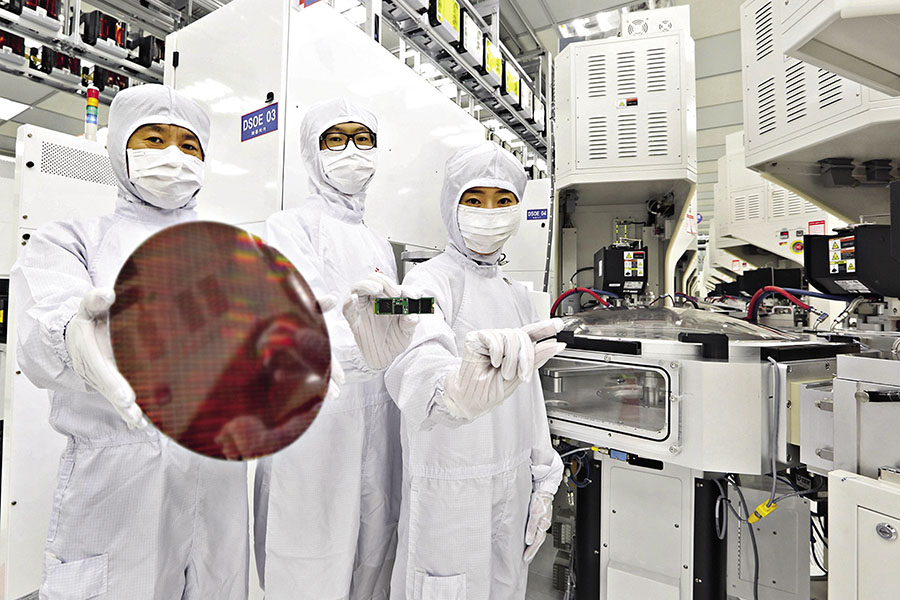
SK Hynix: A new lease of life
SK Hynix, South Korea's second-biggest manufacturer of memory chips, is trying to narrow the gap with Samsung
 Chips and wafers: “The new Hynix is emphasising miniaturisation.”
Chips and wafers: “The new Hynix is emphasising miniaturisation.”
Nothing like a change of both name and ownership to reverse the fortunes of a company that was in trouble for years. Memory-chip manufacturer SK Hynix has seen its revenue and earnings climb dramatically since SK Group took over in early 2012, and this year it cracks the Fab 50 list for the first time.
SK Hynix was born in 1983 as the Hyundai empire’s answer to Samsung Electronics. It went public in 1996, and Hyundai completely spun it off in 2001. By then its name was Hynix—from “Hy” in Hyundai and “nix” from “nics” in electronics. Over the next ten years, it was in and out of financial trouble until SK Telecom, a pillar of SK Group, bought a 20.5 percent stake from its creditor banks and added SK to its name.
Today, SK Hynix is South Korea’s second-biggest manufacturer of memory chips, but it’s well behind Samsung Electronics. Rising demand worldwide for memory chips, the only product the company makes, has boosted SK Hynix’s performance, but so has the aggressive style of the company’s new management team. “The new SK Hynix is trying its best to narrow the gap with Samsung,” says Ahn Ki-Hyun, executive director of the Korea Semiconductor Industry Association, who was an engineer with Hynix as Hyundai was pulling out in 2001. “Old Hynix focussed on manufacturing improvement. The new Hynix is focusing on R&D and technology for the D-RAM and emphasising miniaturisation of NAND flash memory.”
Revenue is expected to hit $25.2 billion this year, 180 percent higher than in 2012. Much of the credit goes to Chief Executive Park Sung-Wook, who started as an engineer with the old Hynix, rose through the ranks, hung on during the transition to SK and now has been rolling out innovations, some developed at the company’s research and development centre in San Jose, California. With nearly 30,000 workers at three manufacturing plants, two near Seoul and one in Wuxi, near Shanghai, SK Hynix sells 90 percent of its chips to foreign customers, mostly in the US and China.
Now SK Hynix is trying to take over part of Toshiba, which is No 2 in NAND flash memory chips globally, behind Samsung, and fourth overall in chips, behind Samsung, SK Hynix and Micron. By shedding its memory-chip unit, Toshiba hopes to cover huge losses from its Westinghouse nuclear-power subsidiary. But analysts are not keen on this move. James Rooney, chairman of Advanced Capital Partners in Hong Kong, cites SK Hynix’s “attempt to do a Toshiba deal” as evidence “they will somehow get drawn into circumstances that stretch their balance sheet or distract management’s focus”. This, he warns, “could bring on a new crisis during a cyclical market downturn”.
Hank Morris, a financial analyst in Seoul, believes that SK was just plain lucky to pick up Hynix when it did. “SK was purchasing a going concern that was doing well despite the ups and downs of the memory-chip market,” he says. “Few groups in Korea would have the monetary assets to have bought control of Hynix. The government did not want it to go to Samsung because then Samsung would have too large a share of the D-RAM market and that would have caused the government problems.”
(This story appears in the 29 September, 2017 issue of Forbes India. To visit our Archives, click here.)














